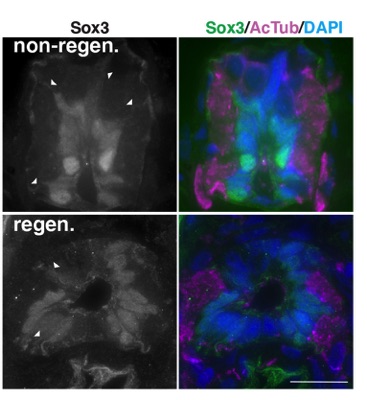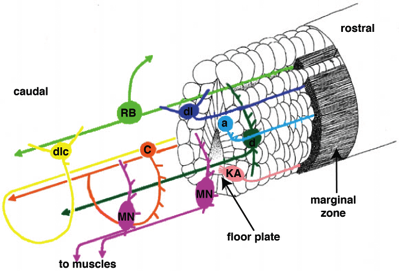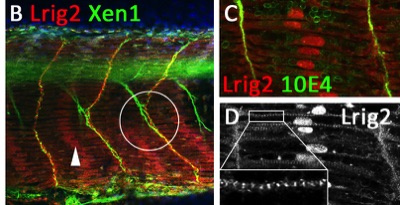Karel Dorey Laboratory

Role of Lrig2 in neuro-muscular development
How to rebuild an appendage such as a limb or a tail following injury is a considerable task relying on multiple cell types working in concert. The organism has to protect itself against infection by mounting an immune and wound healing response. This is followed by dedifferentiation or activation of cells located at the injury site to form a zone of proliferating cells. Finally, the lost appendage is rebuilt through exquisitely controlled proliferation, differentiation, and directed outgrowth. For a tissue as complex as the spinal cord, this requires the activation of neuronal progenitor cells (NPCs), their differentiation into specific types of neurons and the re-establishment of neuronal circuits. Whilst the re-activation of NPCs is fairly well understood, the transition from proliferation to differentiation is not. Using a combination of bulk and single cell RNA sequencing on isolated spinal cords before and after tail amputation in Xenopus tropicalis, we identified a population of NPCs present exclusively in the regenerating spinal cord.



The formation, refinement, and maintenance of neural circuits require exquisite control of neuronal differentiation, axonal growth, guidance and branching. While axonal growth and guidance have been extensively studied, much less is known about the mechanisms controlling axonal branching, despite its importance in allowing neurones to make connections with several targets.
We are also investigating neuronal diversity in the Xenopus spinal cord using single cell RNA sequencing. Read more....
(image adapted from Roberts A (2000) Brain Res Bull
Motor neurons (MNs) carry information from the spinal cord to the muscles. Functional MNs develop over several steps beginning with the establishment of progenitor domains in the neural tube. Then, axons from MN cell bodies exit the cord and elongate towards their targets, following guidance cues. Finally, synapses form at neuromuscular junctions and transmit electrical impulses to generate contraction. Diseases affecting MNs have devastating effects and so far no viable therapeutic solution has been developed. Our preliminary data have identified Leucine-Rich Repeats and Immunoglobulin-Like Domains 2 (Lrig2) as an essential protein for the establishment of functional MNs in Xenopus. Importantly, LRIG2 loss-of-function causes urofacial syndrome (UFS), a congenital disease causing grimacing of the face and defects in bladder voiding, Read more...
Spinal cord regeneration
Spinal cord development